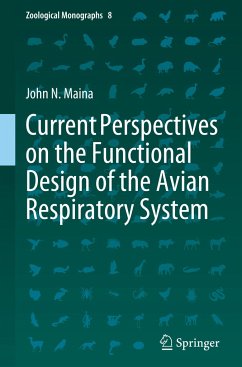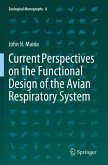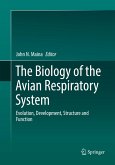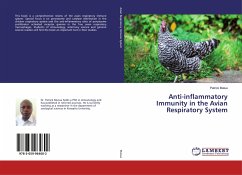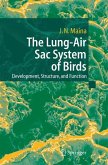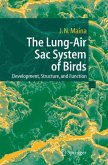Birds have and continue to fascinate scientists and the general public. While the avian respiratory system has unremittingly been investigated for nearly five centuries, important aspects on its biology remain cryptic and controversial. In this book, resolving some of the contentious issues, developmental-, structural- and functional aspects of the avian lung-air sac system are particularized: it endeavors to answer following fundamental questions on the biology of birds: how, when and why did birds become what they are?
Flight is a unique form of locomotion. It considerably shaped the form and the essence of birds as animals. An exceptionally efficient respiratory system capacitated birds to procure the exceptionally large quantities of oxygen needed for powered (active) flight. Among the extant air-breathing vertebrates, comprising ~11,000 species, birds are the most species-rich-, numerically abundant- and extensively distributed animal taxon. After realizing volancy,they easily overcame geographical obstacles and extensively dispersed into various ecological niches where they underwent remarkable adaptive radiation. While the external morphology of birds is inconceivably uniform for such a considerably speciose taxon, contingent on among other attributes, lifestyle, habitat and phylogenetic level of development have foremost determined the novelties that are displayed by diverse species of birds.
Here, critical synthesizes of the most recent findings with the historical ones, evolution and behavior and development, structure and function of the exceptionally elaborate respiratory system of birds are detailed. The prominence of modern birds as a taxon in the Animal Kingdom is underscored. The book should appeal to researchers who are interested in evolutionary processes and how adaptive specializations correlate with biological physiognomies and exigencies, comparative biologists who focus on how various animals have solved respiratory pressures, people who study respiration in birds and other animals and ornithologists who love and enjoy birds for what they are - profoundly interesting animals.
Hinweis: Dieser Artikel kann nur an eine deutsche Lieferadresse ausgeliefert werden.
Flight is a unique form of locomotion. It considerably shaped the form and the essence of birds as animals. An exceptionally efficient respiratory system capacitated birds to procure the exceptionally large quantities of oxygen needed for powered (active) flight. Among the extant air-breathing vertebrates, comprising ~11,000 species, birds are the most species-rich-, numerically abundant- and extensively distributed animal taxon. After realizing volancy,they easily overcame geographical obstacles and extensively dispersed into various ecological niches where they underwent remarkable adaptive radiation. While the external morphology of birds is inconceivably uniform for such a considerably speciose taxon, contingent on among other attributes, lifestyle, habitat and phylogenetic level of development have foremost determined the novelties that are displayed by diverse species of birds.
Here, critical synthesizes of the most recent findings with the historical ones, evolution and behavior and development, structure and function of the exceptionally elaborate respiratory system of birds are detailed. The prominence of modern birds as a taxon in the Animal Kingdom is underscored. The book should appeal to researchers who are interested in evolutionary processes and how adaptive specializations correlate with biological physiognomies and exigencies, comparative biologists who focus on how various animals have solved respiratory pressures, people who study respiration in birds and other animals and ornithologists who love and enjoy birds for what they are - profoundly interesting animals.
Hinweis: Dieser Artikel kann nur an eine deutsche Lieferadresse ausgeliefert werden.

